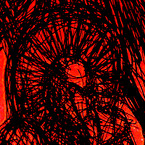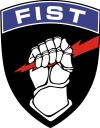exsonic01
Posts: 1131
Joined: 7/26/2016
From: Somewhere deep in appalachian valley in PA
Status: offline

|
http://www.matrixgames.com/forums/fb.asp?m=4026345
http://www.matrixgames.com/forums/fb.asp?m=4637518
There was a good discussion in CMO forum which, I think, is related with relative spotting & info sharing issue in AB.
I think AI will be the key to describe info-sharing, command delay, and relative spotting. Among this discussion, regarding submarine, there is an opinion of let submarines operate as "neutral" by AI using its own automated algorithms and routines, and only coming under player control at specific times to transmit contact information/receive new tasking orders.
This is related with AI issue which 22sec suggested. We don't need to follow that comment, AI control + narrow window of specific time frame for player control. However, I think good AI, which makes tactically sound decision with proper self-protection algorithm, will resolve the issues regarding relative spotting, command delay, and info-sharing.
We cannot do something about "god's eye view" of players. The game "Radio Commander" depicts this issue in more realistic fashion. If AB become 100% real, all players should not have current 2D top view. Instead, players need to watch paper maps and update paper icons with pins with his right hand, and talking via phone / radio with left hand. All enemy information of type, movement, etc... will be very vague and sometimes unreliable. But if AB depict that, no one will like to play such game 
So I think it would be impossible to remove "god's eye view" from players. However, just like CM or CMO do, it would be great if units on the field cannot react as if they have god's eye view like players. And I think info-sharing and relative spotting will depict such "non god's eye view" units.
EW can be represented as longer command delay, no or very slow datalink / info-sharing, and inaccurate info-sharing / relative spotting.
On top of such effect, what I really wish to see is ELINT / SIGINT operations. Too frequent command activity (too frequent mouse click per minutes) expose the certain approximate square/circle area as possible HQ position. Or, if HQ is located in same area more than specific amount time, let it expose the certain approximate square/circle area as possible HQ position. Too long operation time of radar for SAM units and battlefield radar units expose the certain approximate square/circle area as possible origin of radiation. Those operations are performed by air force / navy assets or higher unit assets (information / intelligence company or battalion). Those ELINT / SIGINT info cannot be relayed to commander (player or AI) in real time. Rather, those info will provided / updated to commander only at certain time frame (not too frequent but not too slow, and such time frame should depend on technology) with slight random factor.
Current phase of AB is rather slow due to its unique detection / identification mechanics. Spotting is really difficult and needs some time, and that is why I play this game "slow". In this case, with "relative spotting" and "info-sharing", "ELINT / SIGINT" could help to speed up the phase of each game for AB. But this is just what I think. I guess devs and others in this forum may have different idea. But the concept of ELINT and SIGINT wouldn't be too complicated to understand, so it wouldn't be a factor to increase learning curve.
If AB can scale up to larger conflict, then it would be possible for players to purchase EW / ELINT / SIGINT operation units or vehicles or platforms from support tab or air tab from purchase screen. Then they could use those features based on what they buy. But that is totally different story.
< Message edited by exsonic01 -- 3/27/2020 6:39:37 PM >
|
 Printable Version
Printable Version












 New Messages
New Messages No New Messages
No New Messages Hot Topic w/ New Messages
Hot Topic w/ New Messages Hot Topic w/o New Messages
Hot Topic w/o New Messages Locked w/ New Messages
Locked w/ New Messages Locked w/o New Messages
Locked w/o New Messages Post New Thread
Post New Thread